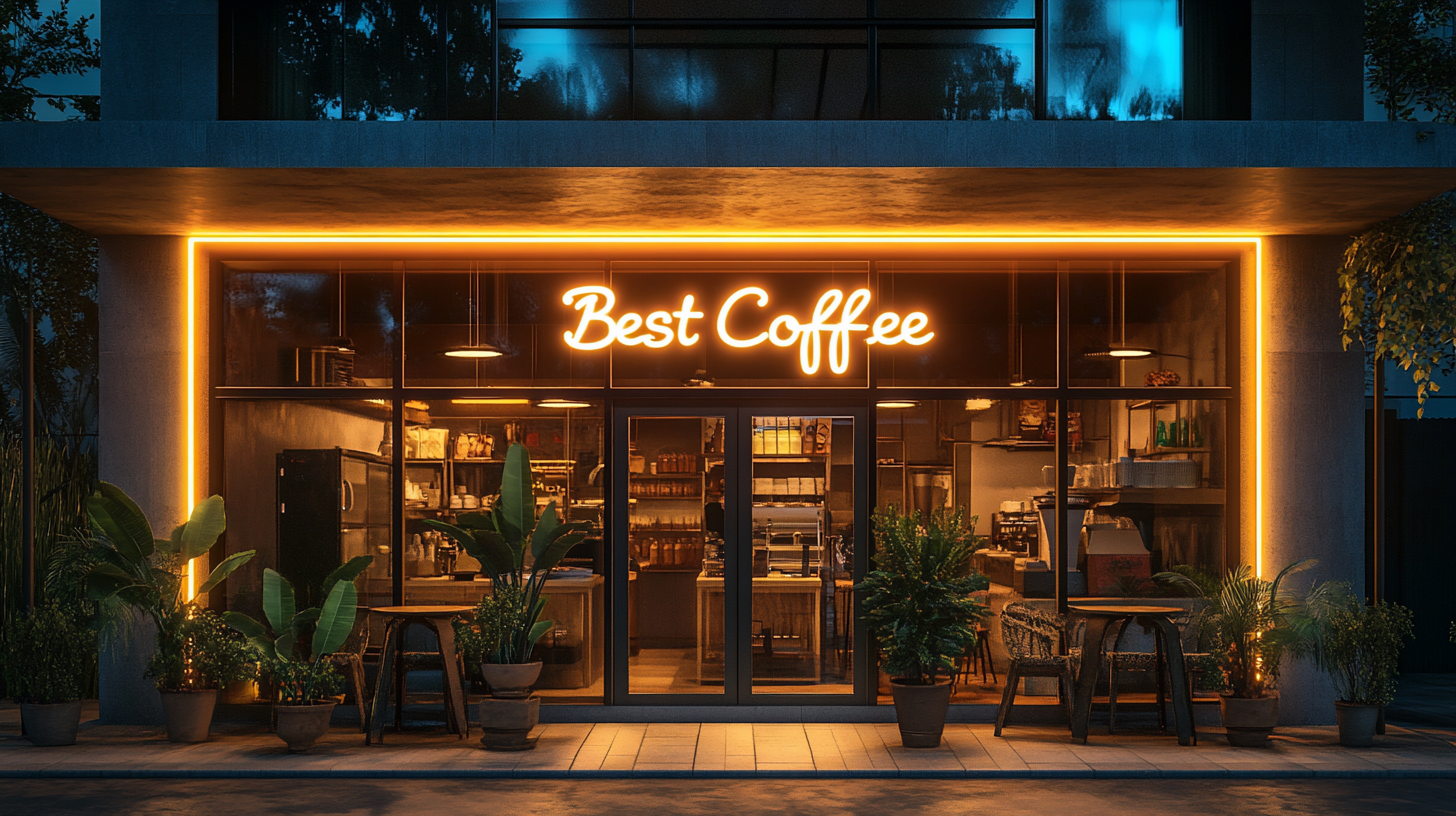Save Your Restaurant (and the Planet) with These 4 Sustainability Trends
Environmentalism and sustainability efforts have existed in America for decades.
However, the country’s environmental movement didn’t truly explode until 1962, when Rachel Carlson published “Silent Spring.” Carlson’s book — a critical exploration of the US’s pollution problem — catalyzed an environmental revolution, leading to twenty-odd years of sustainability-focused changes and improvements.
By the late ‘80s, the eco-friendly movement had finally reached the restaurant industry.
Environmental organizations focused on restaurants and ingredient sourcing became increasingly mainstream, with the emergence of organizations like The Rainforest Alliance in 1987 and The Green Restaurant Association in 1990.
Sustainability-related restaurant certifications exploded in popularity too. For example, The Marine Stewardship Council began issuing certifications in 2000, with other initiatives like The Food Made Good Sustainability Standard launching in the following decade.
While the past few decades have brought instrumental change to the restaurant industry’s take on sustainability, present-day trends indicate that environmental efforts haven’t slowed down.
In fact, restaurant sustainability efforts are now more important to restaurant owners — and restaurant-goers — than ever before.
In this blog, we’ll explore:
- Current trends in restaurant sustainability efforts (with examples)
- Why restaurant sustainability matters to owners and operators
- How Craver’s tech can improve your sustainability efforts
So, without further ado…
Here are the four restaurant trends that can help the planet (and your restaurant’s bottom line).
4 Restaurant Sustainability Trends and Examples
Trend 1 — Renewable Energy & Energy Management
North American restaurants are “top energy users” compared to other commercial businesses, with estimates suggesting electricity usage of ~44 kWh per ft2/annually.
So, for a 1200-square-foot restaurant, that’s an annual electricity usage of ~53,000 kWh — the same amount of electricity needed to power ~53,000 televisions for over 1M hours.
(Which is long enough to watch the Titanic 235,556 consecutive times, by the way.)

The problem with high electricity usage is less about the electricity itself and more about its environmental impact.
“Nearly all parts of the electricity system can affect the environment,” according to the US EPA, with effects including greenhouse gas (GHG) emissions, air and thermal pollution, and solid/hazardous waste generation. These energy-induced environmental impacts are why we’re seeing more and more restaurants explore energy-efficient solutions and management options.
Chipotle, for example, has been exploring renewable energy solutions for years.
Example: Chipotle’s Renewable Energy Management
Chipotle has been exploring renewable energy solutions for years. In March 2021, Chipotle introduced new Environment, Social, and Governance (ESG) metrics, one of which was reducing GHG emissions by 5%+. By the end of 2021, Chipotle had exceeded its goal, using newly adopted Energy Management Systems (EMS) to reduce annual energy usage by 12.7%.
By 2022, 40% of the brand’s total energy consumption had come from “Green-e® Energy certified wind,” and by 2023 the brand had piloted a new “all-electric restaurant” model.
“With our aggressive development goal in North America, we hold ourselves accountable to reduce the environmental impact of our restaurants," said Chipotle’s Chief Corporate Affairs Officer, Laurie Schalow. "We are aiming to incorporate some elements of our responsible restaurant design into many of our new restaurant openings going forward."
Trend 2 — Reducing Food Waste with Smart Tech
Restaurant food waste is a massive problem in the US.
Restaurants generate ~11.4 million tons of food waste annually, which equals ~40% of the country’s food supply.
It’s also enough food to feed 13.6* million Americans for a year; a statistic that gets even more harrowing when you learn ~13% of the US is food insecure.
One solution restaurants have found for tackling food waste problems is smart tech and waste management systems — something IKEA restaurants have had great success with.
Example: Ingka Group’s Food Waste Campaign
In 2015, IKEA retailer Ingka Group partnered with Winnow, a UK-based tech company created “to meet the food waste challenge.” The partnership started small, with Winnow piloting their software in two of Ingka’s England stores. But, once the results from the six-month pilot showed a 40% reduction in food waste, things started moving quickly.
The pair’s “Food is Precious” campaign launched in 2017, debuting Ingka’s goal to “cut food waste by [50%]” using Winnow’s smart scale solutions… and they got started right away.
By 2020, the company reported a 32% reduction in food waste. By 2021, that number had reached 46%. And, by 2022, Ingka had exceeded its original goal, reporting a 54% reduction in food waste (equivalent to saving 20 million meals and avoiding 36K tons of CO2 emissions).
“We know that many people [worldwide] suffer from hunger, whilst at the same time a third of all food harvested and produced is wasted,” said Karen Pflug, Chief Sustainability Officer at Ingka Group. “It is clear that we need to… play our part to change this. The impact we can all have on preventing and reducing food waste [benefits] both people and the planet.”
*Calculated using the USDA’s most recent food consumption estimates.
Ordered too much inventory (again)? Let customer data from your Craver app guide your next inventory order — food waste-free.
Trend 3 — Ethical Ingredient Sourcing and Education
Ethical ingredient sourcing and supply chain transparency are increasingly common sustainability demands in the restaurant industry… and there are a few reasons why.
First, ethical farming practices are a much higher priority to today’s consumers.

A recent NSF study suggests animal welfare plays a major role in consumer’s purchasing decisions, with 68% of respondents saying supply chain “transparency and compliance in animal wellness” is important. And, because most factory farming wellness standards are voluntary in the US, consumers tend to place less trust in “industrial animal agriculture.”
Second, consumers place more importance on “clean,” organic ingredients.
According to an IFIC survey, Americans are swapping foods with “[chemical-sounding] ingredients” for clean and organic ingredients. So, even though all food has chemicals, the perception is what matters most here; ~37% of Americans think local food is better, so they’ll buy from people who think so, too.
Restaurants have been addressing this demand for transparency with… well, transparency.
However, one restaurant in particular has always been dedicated to transparency: Sweetgreen.
Example: Sweetgreen’s Transparency Commitment
Since its inception in 2007, the healthy fast-food brand has committed to being as transparent as possible about as much as possible.
The Sweetgreen website offers a ton of transparency-related docs, like a detailed commitment to animal welfare and plans for carbon neutrality by 2027. There’s a lot of tech-fueled transparency at Sweetgreen, too, from calculating emissions with SaaS company Watershed to tracking ingredients through Trustwell’s FoodLogiQ.
“[Sweetgreen’s] mission is to connect more people to real food and build healthier communities by doing that,” said Nathanial Ru, Co-Founder and Chief Brand Officer. “[And], more awareness around plant-based foods, healthy eating, and transparency around farming, whether it's us or somebody else, is a win for everyone.”
Trend 4 — Sustainable Packaging and Products
According to Upstream’s 2021 “Reuse Wins” report, restaurants spend ~$24 billion annually on disposal products like plastic forks and paper cups.
The result? Close to “1 trillion individual pieces of disposable food ware and packaging” headed straight from our restaurants to our oceans, forests, and landfills.

Combine that plastic waste with the 300 million pounds of paper waste from restaurant and retail receipts — some of which are made with incredibly toxic chemicals, by the way — and we’ve got a packaging problem on our hands.
Luckily, it’s a problem that restaurants are slowly figuring out how to address — like McDonald’s.
Example: McDonald’s Packaging Improvements
In 2018, McDonald’s announced a goal of improving its packaging to reduce waste so that “100 percent of [the restaurant’s] guest packaging will come from renewable, recycled, or certified sources” by 2025.
And, although this goal’s end date is still a year away, McDonald’s has not been sitting idly.
By the end of 2022, McDonald’s had already reached 81% of its “renewable, recycled, or certified” packaging goals, including new beverage cups and increased access to recycling. The brand had also “reduced virgin fossil-fuel based plastic” by ~48% in their Happy Meal toys, and started exploring reusable packaging solutions.
McDonald’s continued their packaging promise in 2023 with even more developments and product testing, from reusable McFlurry spindles to strawless drink lids (à la Starbucks) to reduce plastic and paper straw waste. And, with some of the developments 2024 has brought — like the biodegradable, compostable, and recyclable packaging Argentinian locations are experimenting with — efforts seem to be paying off.
“It’s not enough to just do less damage to our planet. We need to do more good,” said McDonald’s President and CEO Chris Kempczinski. “That’s why we remain focused on driving climate action, helping to protect natural resources, reducing waste, and transitioning to more sustainable packaging.”
Say goodbye to printed receipts and hello to waste reduction with a Craver app.
Why Do These Restaurant Sustainability Trends Matter?
There are two major reasons sustainability matters to the restaurant industry.
First, restaurant sustainability matters because the industry’s impact on the planet matters.
As illustrated in the previous section, the restaurant industry has historically been — and continues to be — a massive source of food and plastic waste, emissions, and pollution. Every restaurant and cafe is responsible to the environment (and the rest of the industry) to be more sustainable, no matter how small those first few baby steps are.
Second, restaurant sustainability matters because the industry’s consumers say it matters.
While going green might be the right thing to do regardless, restaurants are still businesses, and businesses have to attract (and maintain) a healthy stream of customers to survive.
Luckily, eco-focused shifts in consumer preferences mean your restaurant can have its sustainability cake… and eat it, too.
Consumer Sustainability Preferences
- 78% of consumers say “a sustainable lifestyle” is important to them
- 70% of consumers are willing to sacrifice convenience if it means getting healthier products
- 47% of consumers would consider changing what they order from a menu if another option was more sustainable
- 90% of operators consider their consumers to be more driven by personal values than before
Consumer Demand for ESG Business Commitments
- 30% of consumers are more likely to buy from brands with “sustainable credentials”
- 65% of consumers want to buy from “purpose-driven brands that advocate sustainability”
- Consumers think the most impactful sustainability incentives are tangible ones, like:
Consumer Willingness to Spend
- The average consumer would pay a 9.7% premium for more sustainable products
- Consumers are more likely to buy products with ESG-related claims than those without
- 70% of Millennials (and 72% of Gen Zers) would pay more for take-out if they could upgrade to sustainable packaging
Tech-Powered Restaurant Sustainability with Craver
One of the best parts about committing to greater restaurant sustainability?
The upgraded restaurant tech that comes with it.
A lot of restaurant sustainability solutions are powered by tech and AI, giving you the improvements and efficiencies that tech is known for while simultaneously reducing all kinds of wastage.
Look at Craver’s custom-branded mobile apps, for example.
With a Craver app, you can:
- Let your customers order for themselves, reducing order errors (efficiency) while eliminating paper receipts (sustainability)
- Offer online ordering, making delivery easier and more seamless (efficiency) while adding a custom option for cutlery (sustainability)
- Create a loyalty program, incentivizing your customers to become regulars (efficiency) while creating offers around eco-friendly products (sustainability)
Working with us means you don’t have to pick between sustainability efforts or digitalization.
Because our solutions give you both.
See how Craver’s digital solutions can help your restaurant’s sustainability efforts.
.png?width=86&name=Untitled%20design%20(84).png)





